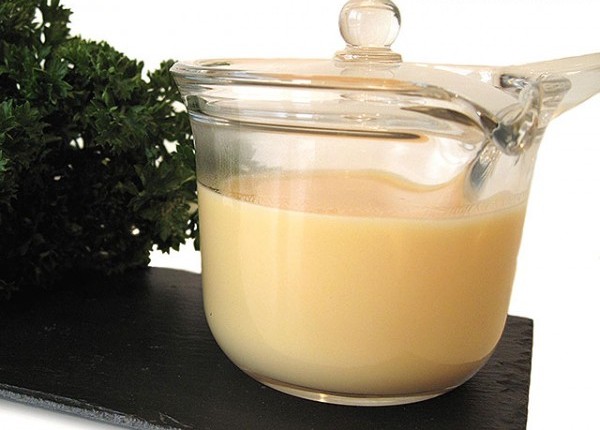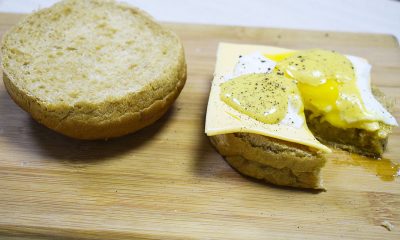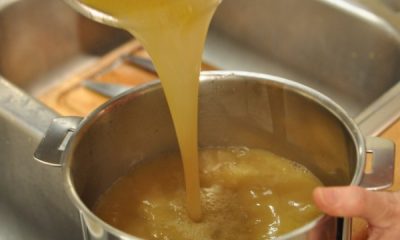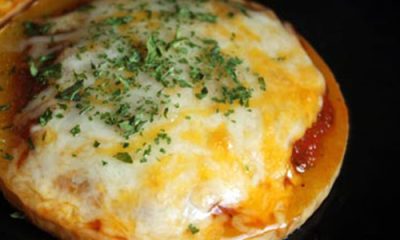Food Blogs
Beurre Blanc(Nantais) Recipe
For: boiled fish originally, but now for all kinds of fish and shellfish, and vegetables such as asparagus, broccoli, cauliflower, as well as for sautés of veal, chicken, kidneys, livers, and so forth.
This famous sauce originated in Nantes, on the Loire River, and is traditionally served with pike, brochet au beurre blanc. Warm, thick, creamy, and butter-colored, the original sauce is only butter creamed with shallots, wine vinegar, lemon, and seasonings. The idea was taken up by nouvelle cuisine chefs in the early seventies because it is a far easier sauce system than the long-simmered classics, and it is delicious with so many dishes. Rather than a lemon and vinegar base, you use a strong reduction of fish or meat juices—the residue, for instance, of sautéed chicken livers or foie gras deglazed with wine and shallots and, perhaps, a dash of wine vinegar all reduced almost to a syrup; this is then enriched by the beating in of a large quantity of butter. It is, in fact, the usual buttered deglazing sauce, but rather than beating in 2 or 3 tablespoons of butter for 4 to 6 servings, you might add as much as half a pound. With butter at 100 calories per tablespoon, an otherwise simple sauté can be marvelously yet astronomically (even lethally) fattening; but, as we imply in most of our recipes, “the amount of butter is up to you.”
The trick in making a beurre blanc is to prevent the butter from turning oily like melted butter; it must retain its warm, thick, creamy consistency. A chemical process takes place once the base is boiled down and the acids are well concentrated so that the milk solids remain in suspension rather than sinking to the bottom of the pan. We give two methods here, first the classic way where the butter is slowly creamed in, and second the newer fast-boil system. In either case you may beat in more butter than the amount given, but if you beat in less you may have too acid-tasting a sauce.

| Servings |
MetricUS Imperial
|
Ingredients
The flavor base
- A 6-cup medium-weight stainless saucepan
- 2 ½ Tb white-wine vinegar
- 2 ½ Tb dry white wine vermouth, or lemon juice
- 1 Tb very finely minced shallots or green onions
- tsp ½salt
- tsp ⅛white pepper
- 2 Tb butter
The butter—Added the classic way
- A wire whip
- 8 ounces best quality unsalted butter well chilled, and cut into 16 pieces, 2 sticks
- Salt pepper, and lemon juice as needed
Ingredients
The flavor base
The butter—Added the classic way
|

|
Instructions
- Boil the liquid, shallots or onions, and seasonings with the butter until reduced to a syrupy consistency—about 1½ tablespoons should remain.
The butter—Added the classic way
- Remove saucepan from heat and immediately beat in 2 pieces of chilled butter. As the butter softens and creams in the liquid, beat in another piece. Then set the saucepan over very low heat and, beating constantly, continue adding successive pieces of butter as each previous piece has almost creamed into the sauce. The sauce will be thick and ivory-colored, the consistency of a light hollandaise. Immediately remove from heat as soon as all the butter has been used. Beat in additional seasonings to taste.
Adding butter—The fast-boil way
- Make the same flavor base described above, and cut the same amount of butter into pieces; however, the butter need not be chilled. Bring the reduced flavor base to the fast boil and start beating in butter piece by piece—it will at once produce thick creamy bubbles. When all the butter has been added, boil for 2 seconds only and pour the sauce into a bowl or another saucepan to stop the cooking. (If you continue boiling you will reduce the sauce base liquid to nothing and the butter will quickly clarify itself—no more creamy sauce.)
- Holding the sauce. It will thin out and turn oily almost at once if you reheat it or if you keep it too warm. Hold it over barely tepid water, or place it near the faint heat of a gas pilot light, or on the slightly warm shelf over a cooktop. If it does thin out, cream it by beating a spoonful of sauce in a cold mixing bowl, gradually beat in the rest by very small spoonfuls; reheat it by beating in dribbles (2 to 3 tablespoons in all) of hot liquid such as wine, concentrated meat juices, or heavy cream.




















